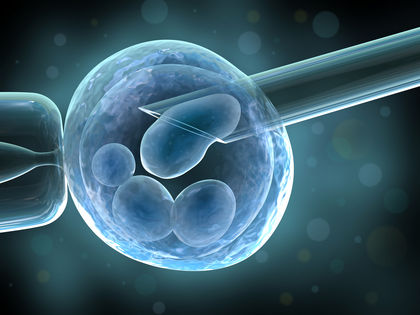Neurofibromatosis

Neurofibromatosis (noor-o-fy-bro-ma-TO-sis) is a genetic disorder that causes tumors to grow on nerves and is also characterized by skin changes and deformities in bone.
KEYWORDS
for searching the Internet and other reference sources
Inherited Genetic Disorders
Neurology
What Is Neurofibromatosis?
The most common form, called neurofibromatosis type 1 or NF-1, mainly affects nerves in the skin, producing soft nodules or bumps. Neurofibromatosis type 2 (NF-2) is a very rare disorder that affects the auditory nerves responsible for hearing and balance. Both types are caused by defective genes * .
Neurofibromatosis also is called von Recklinghausen's disease, after the German physician Friedrich von Recklinghausen (1833—1910), who described it in 1882. The tumors he noted, called neurofibromas (noor-o-fy-BRO-mas), arise from the cells that make up the covering sheaths of the nerves.
NF-1 and NF-2 neurofibromatoses occur in both sexes and in all racial and ethnic groups. In the United States, NF-1 occurs in about 1 of 4,000 persons. NF-2 is 10 times less common, occurring in about 1 in 40,000 people.
What Causes Neurofibromatosis?
Although many people who have neurofibromatosis inherited it from one of their parents, between 30 and 50 percent developed it sponta-neously from a mutation (change) in their genes before birth.
Neurofibromatosis is inherited as an autosomal (non-sex-linked) dominant disorder. This means that each child born to a parent with neurofibromatosis has a 50 percent chance of inheriting the defective gene and developing the disease.
Genes produce proteins that determine a person's body physical and metabolic characteristics, everything from the color of a person's hair to how fast a person burns fat. Scientists recently have discovered that the neurofibromatosis genes, when normal, produce proteins that suppress tumors. This suggests that when the genes are defective, they may fail to produce enough of these proteins, thus allowing the growth of tumors. Further research is needed to confirm this theory, however.
* genes are chemicals in the body that help determine a person's characteristics, such as hair or eye color. They are inherited from a person's parents and are contained in the chromosomes found in the cells of the body.
What Are the Symptoms of Neurofibromatosis?
The signs and symptoms of neurofibromatosis vary greatly among individuals even in the same family. Many people do not know that they

NF-1 produces many soft, bumpy or stalk-like tumors under the skin. Another common sign of this disorder is light-brown patches on the skin called cafe-au-lait spots. Although these spots may appear in people who do not have NF-1, people with NF-1 usually have six or more of them. Signs may also include freckles in the armpits or groin areas, growths in the eye or on the optic nerve, deformation of bones, and scoliosis, a side-to-side curvature of the spine.
These signs first appear in infancy or early childhood, and increase as a person grows older. Occasionally, tumors are massive or in rare cases become cancerous. They may also occur inside the body, squeezing or blocking internal organs.
The signs of NF-2 include tumors on the auditory (acoustic) nerves. These growths can cause loss of hearing and may damage nearby nerves and structures in the brain. Tinnitis (ti-NY-tus; a ringing in the ears), balance disturbances, or headache can also occur. People with NF-2 may first notice these symptoms in their teen or early adult years.
How Is Neurofibromatosis Treated?
The diagnosis of neurofibromatosis is made mainly by noting its out-ward signs. Internal viewing techniques, such as MRI (magnetic resonance imaging), are sometimes needed as well. Treatment is then based upon controlling symptoms.
Operations and braces may be needed to correct scoliosis. Surgery may also be performed to remove tumors that are exceptionally large, painful, or that press on organs. The tumors often grow back, however.
Various cancer treatments may be used in the rare instances that tumors become malignant. * Recent progress in biomedical research into the causes of neurofibromatosis has raised hopes that someday there will be treatment to slow or halt the growth of its tumors.
Some cases of neurofibromatosis can be severely debilitating, and its complications can be fatal. In most instances, however, symptoms are mild, and the person with the disorder can lead a normal, productive life.
Genetic tests and counseling are available for people with neuro-fibromatosis. It can help them learn more about their condition or that of a family member, and can assist in making decisions about having children of their own.
The Elephant Man
Neurofibromatosis has long been associated with the "Elephant Man." This was a name given to the Englishman Joseph Carey Merrick (1862-1890), who was exhibited in public as a medical freak because of his grotesque disfigurements. Merrick was, until recently, thought to have had a severe form of neurofibromatosis, but accumulating evidence now indicates that he was suffering from a much rarer disease called Proteus syndrome. Nonetheless, public awareness of neurofibromatosis was greatly increased afterthe production of a play in 1979 and a film in 1980 on the life of Merrick.
* malignant (ma-LIG-nant) refers to cancerous tumors that spread to other places in the body, resulting in a condition that can lead to death.
See also
Genetic Diseases
Resource
Organization
The National Neurofibromatosis Foundation, 95 Pine Street, 16th Floor,
New York, NY 10005. This organization provides information for patients
and health professionals on neurofibromatosis.
Telephone 800-323-7938
http://www.nf.org
Thanks Donna MOrris
Thank you